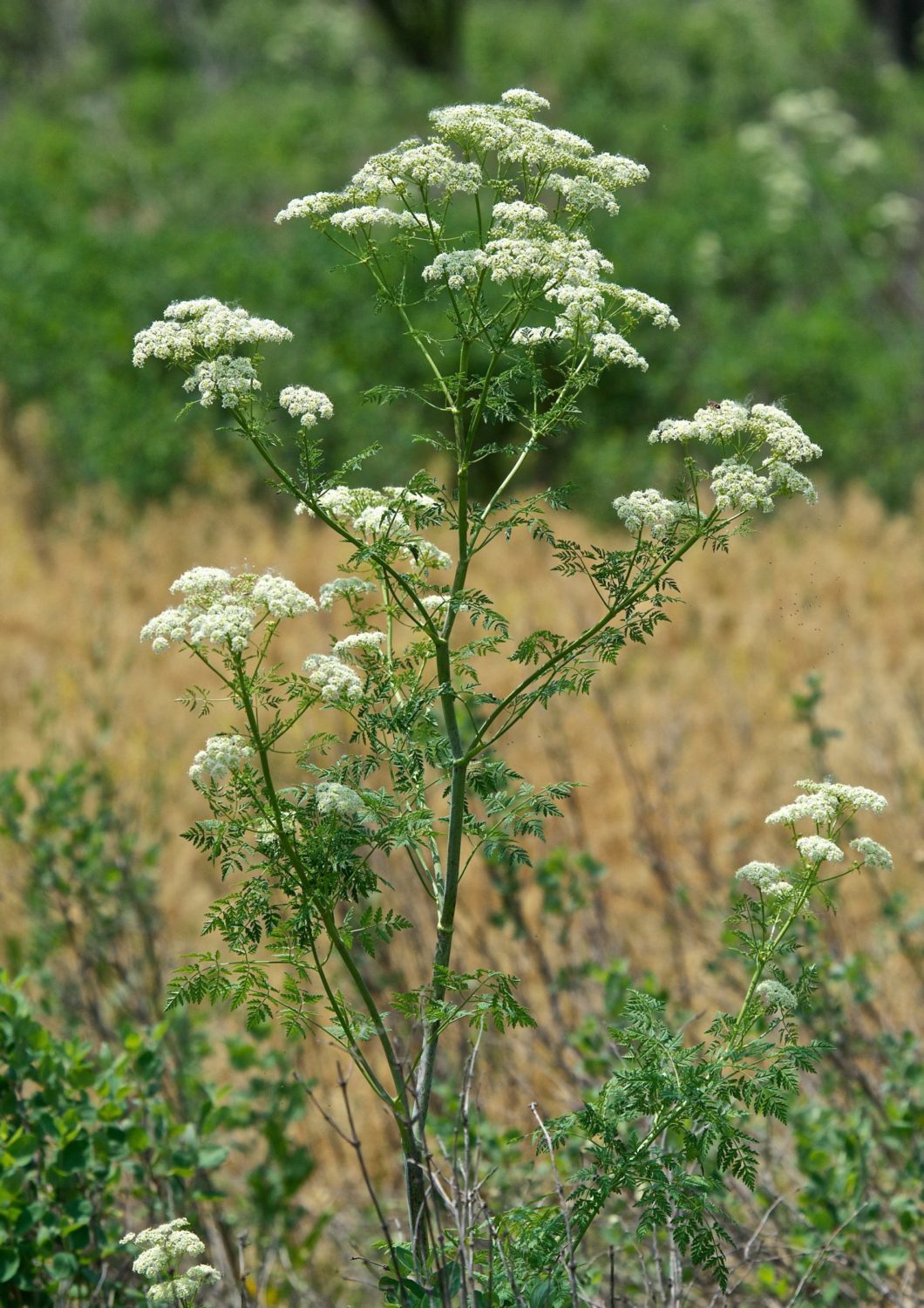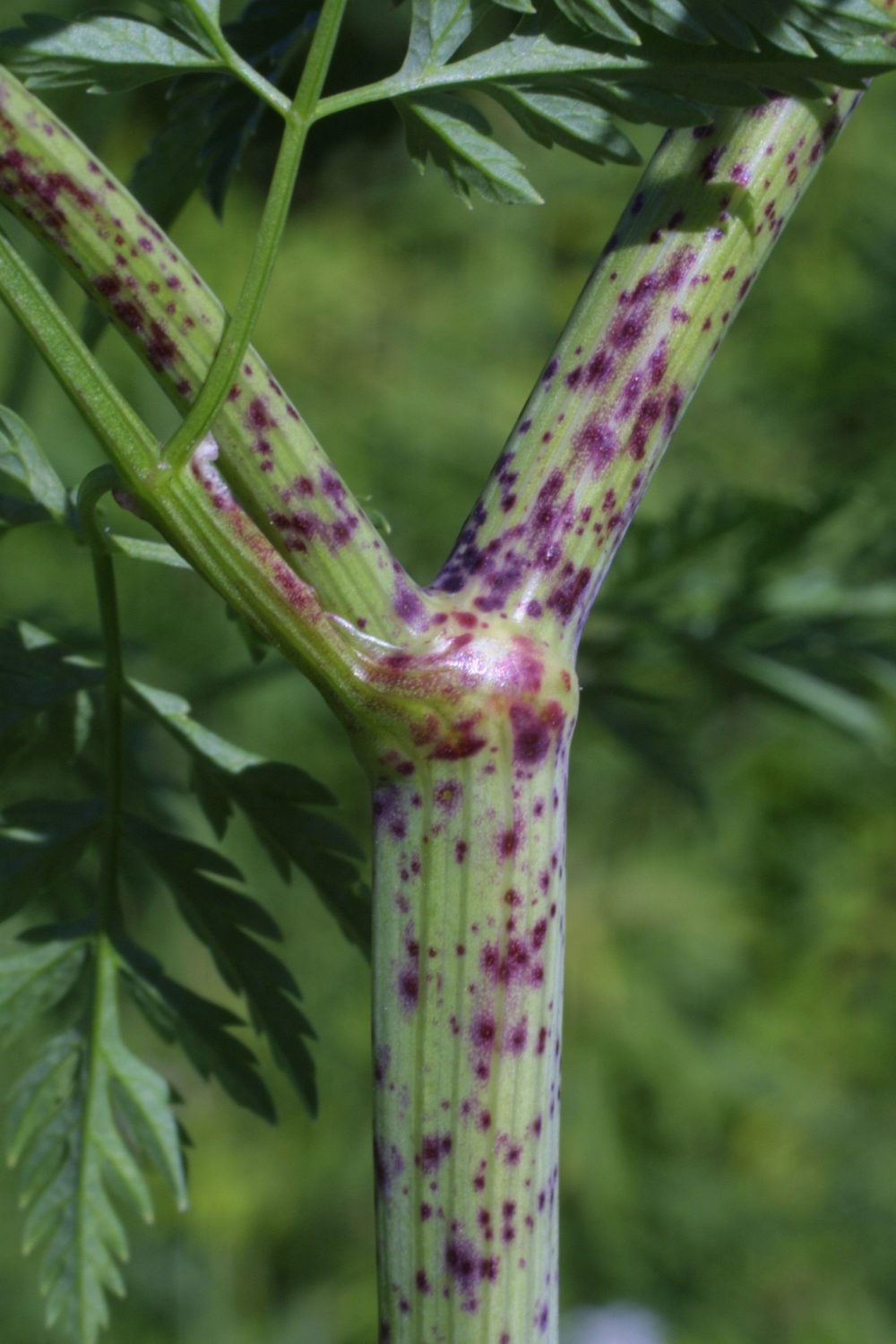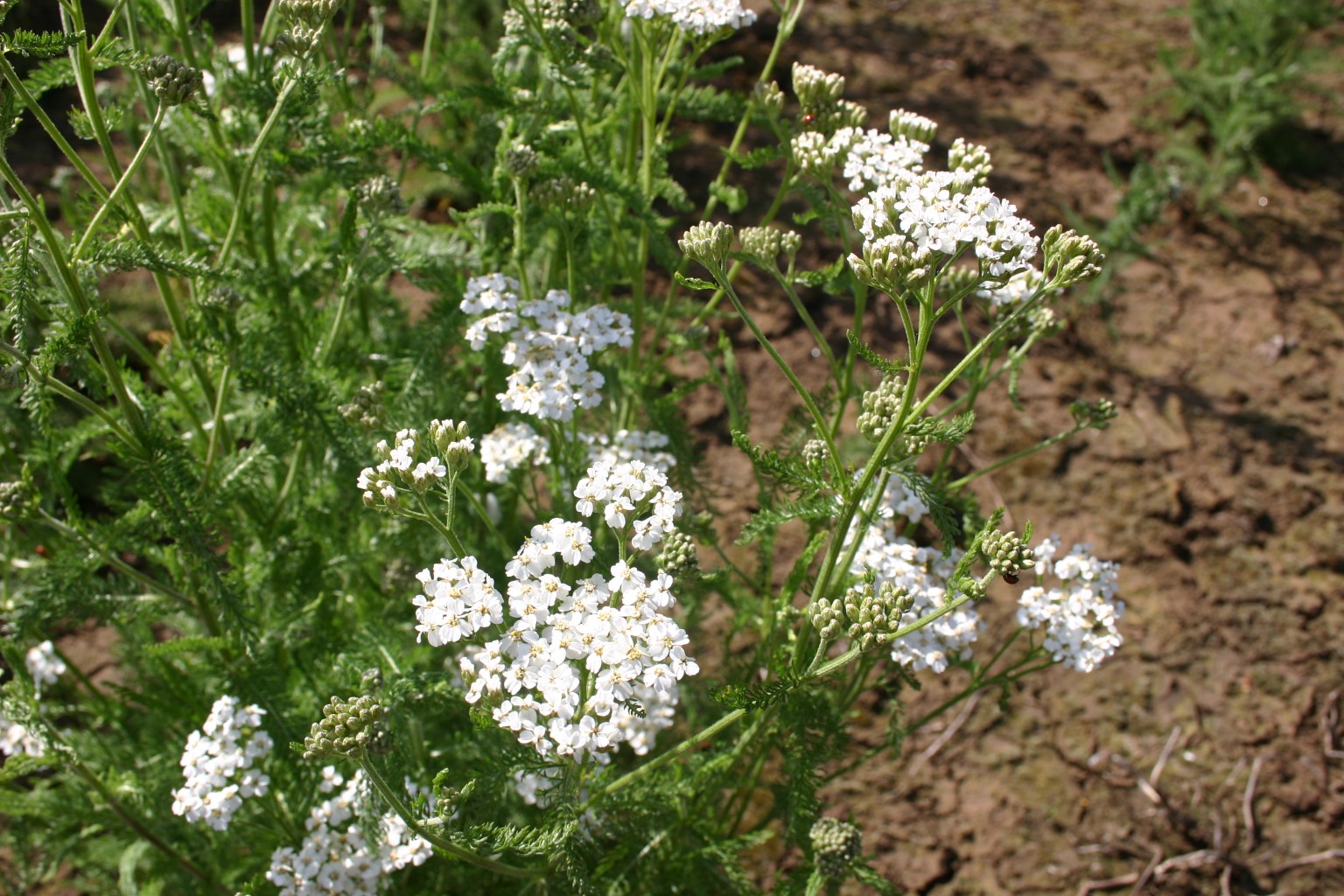Introduced species: Poison hemlock (Conium maculatum)
Characteristics: The carrot family (Apiaceae) is perhaps the most wildly bifurcated plant family in terms of human use, with most of its members being either yummy (carrots, parsnips, parsley, cilantro, etc.) or deadly toxic (e.g., giant hogweed, water hemlock, angelica). This months’ weed falls decisively in the latter category, as the name implies; this is the plant that was famously used to execute Socrates. Poison hemlock–not to be confused with hemlocks (the evergreen trees, which are completely unrelated; a pox on common names!)–is a tall, hairless biennial, producing lacy-looking basal leaves(roughly triangular in shape) in its first year, followed in year two by a flower stalk up to 2.5 m (8 ft) tall. The flowers are small, white, 5-petaled, and appear in diffuse clusters; the stalk on which they appear is hollow, generally covered with purple spots or blotches (hence “maculatum;” immaculate it is not!). All parts of the plant, from the long, white taproot to the gray-brown seed capsules, are poisonous if ingested; inhalation and skin contact can also produce toxic effects.
Spread: Poison hemlock spreads primarily by seed. Originally introduced as an ornamental from Europe and the Mediterranean region, it has spread readily in many parts of the world due to its prolific seed production and tolerance of a wide range of growing conditions (ranging from gravelly roadsides and vacant lots to dry grasslands to moist streamside habitats).
Control: Small infestations can be dug up by hand; this is best done in spring, when the soil is moist and the seeds have not yet formed. Be sure to wear gloves and other protective gear, so the sap can’t get on your skin.
Native replacement: Yarrow (Achillea millefolium) is a white-flowered perennial, growing to roughly 60 cm (2 ft), that tolerates a wide range of conditions, with feathery leaves and a similar bloom time to that of poison hemlock. It is a great favorite of bees and other pollinators.



